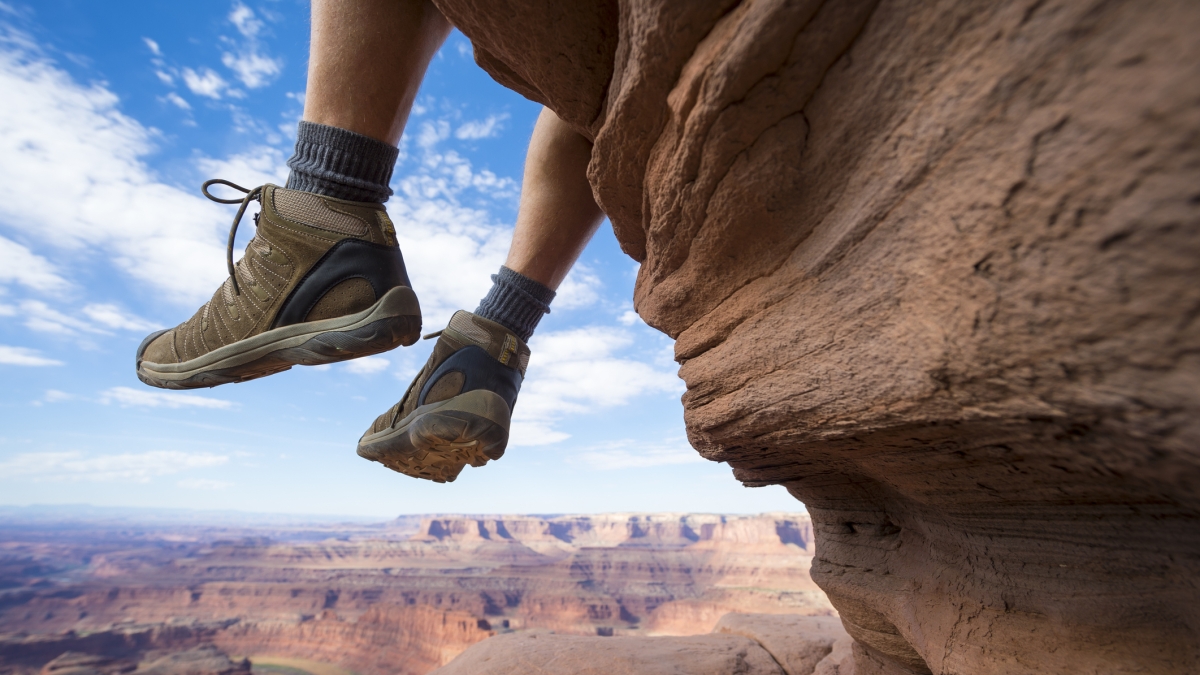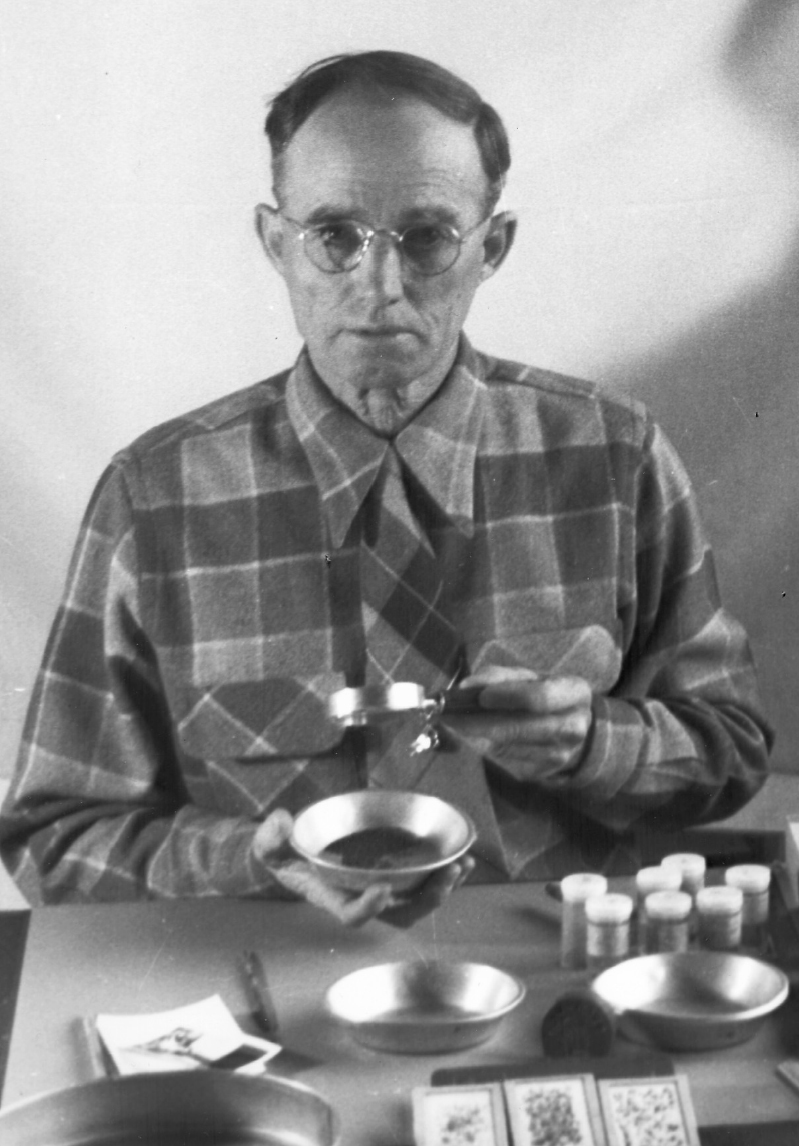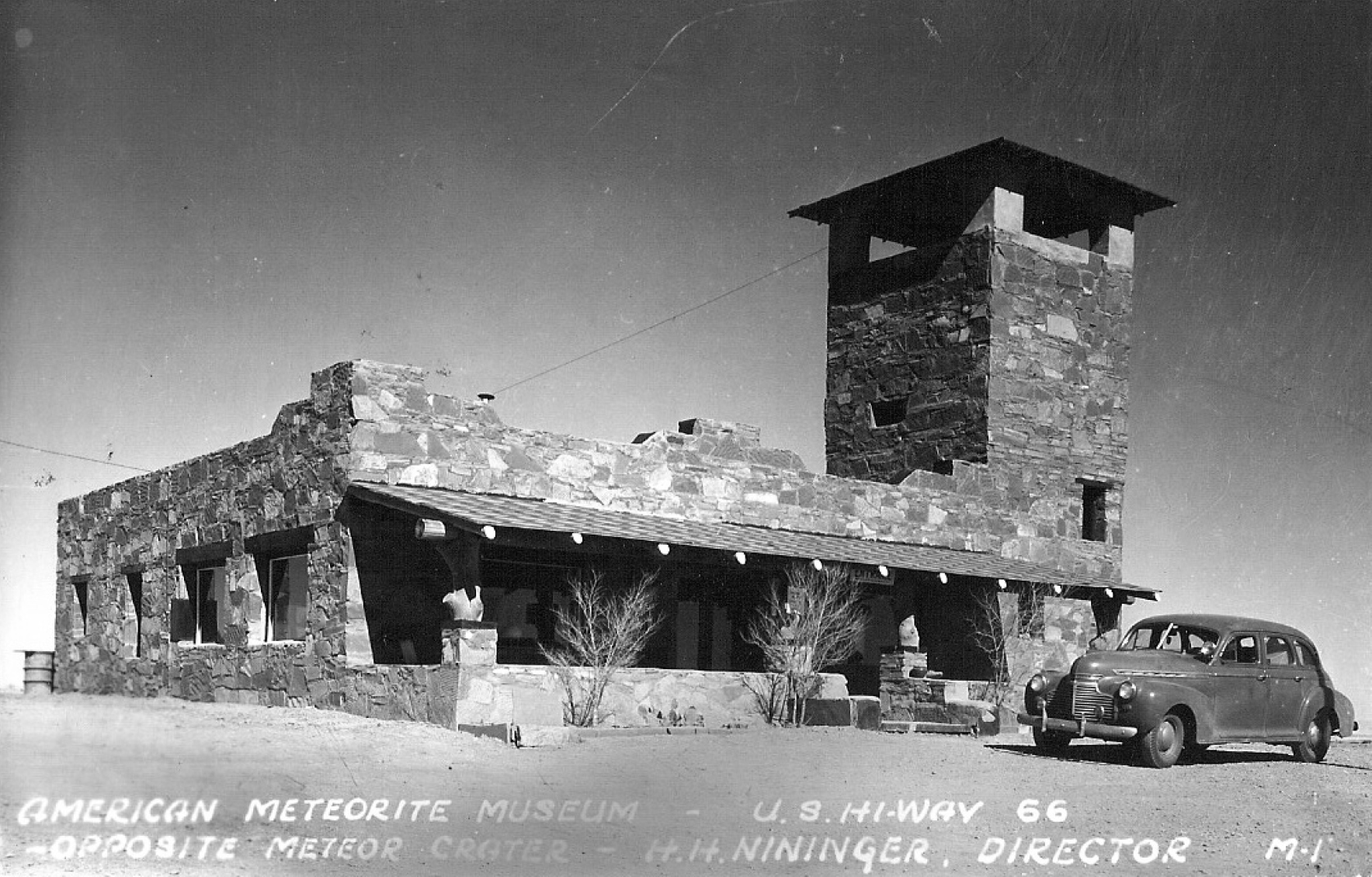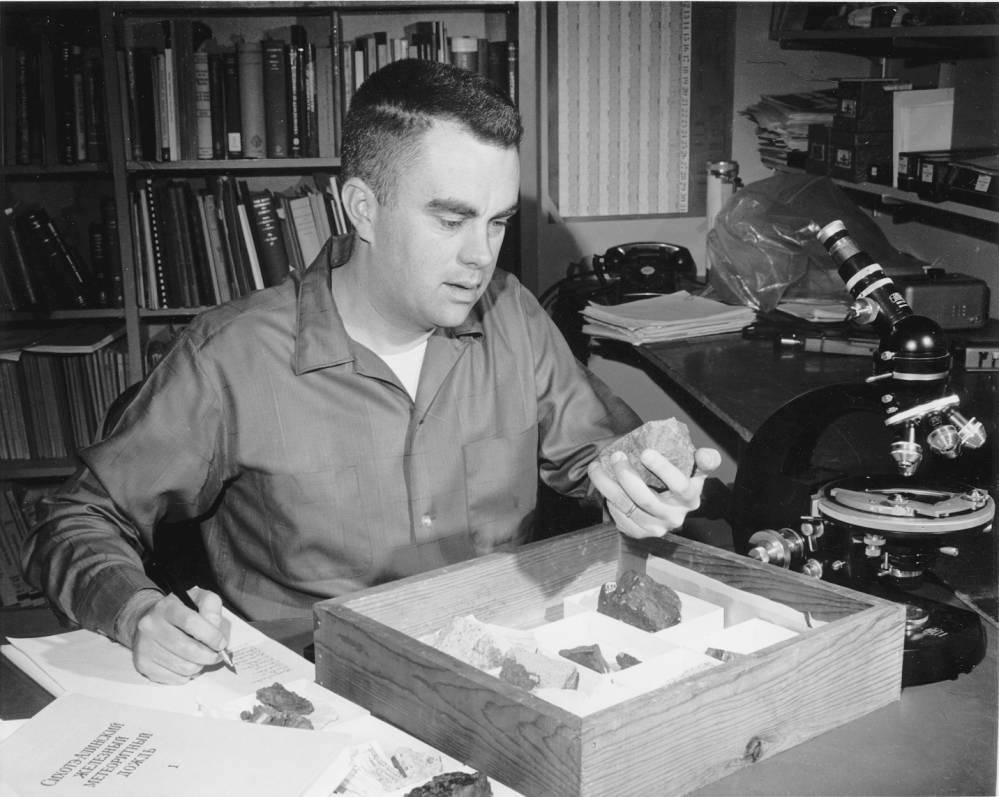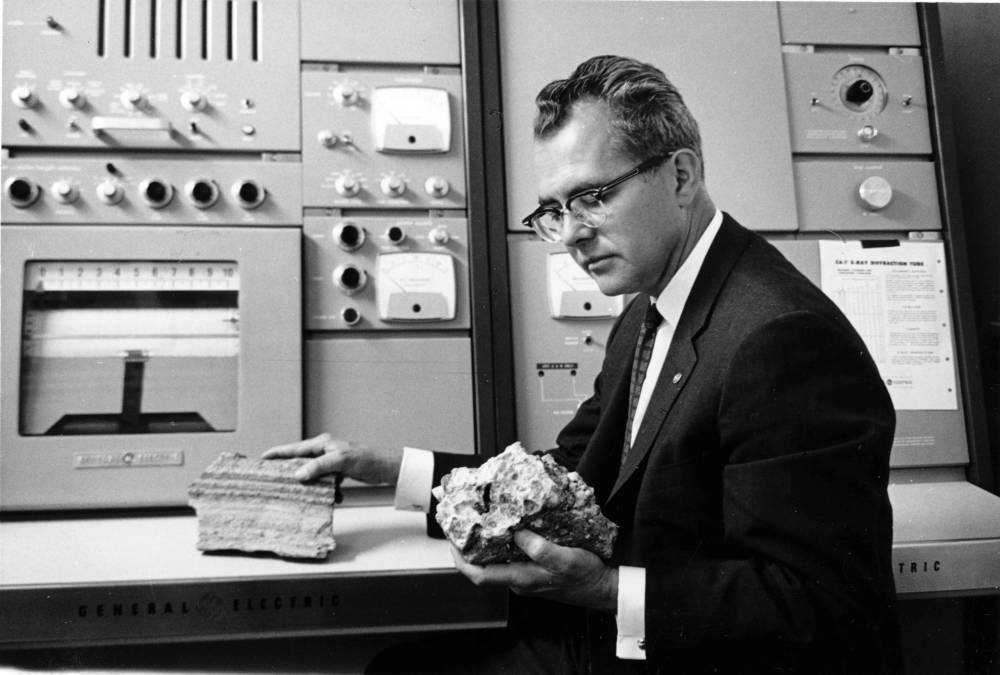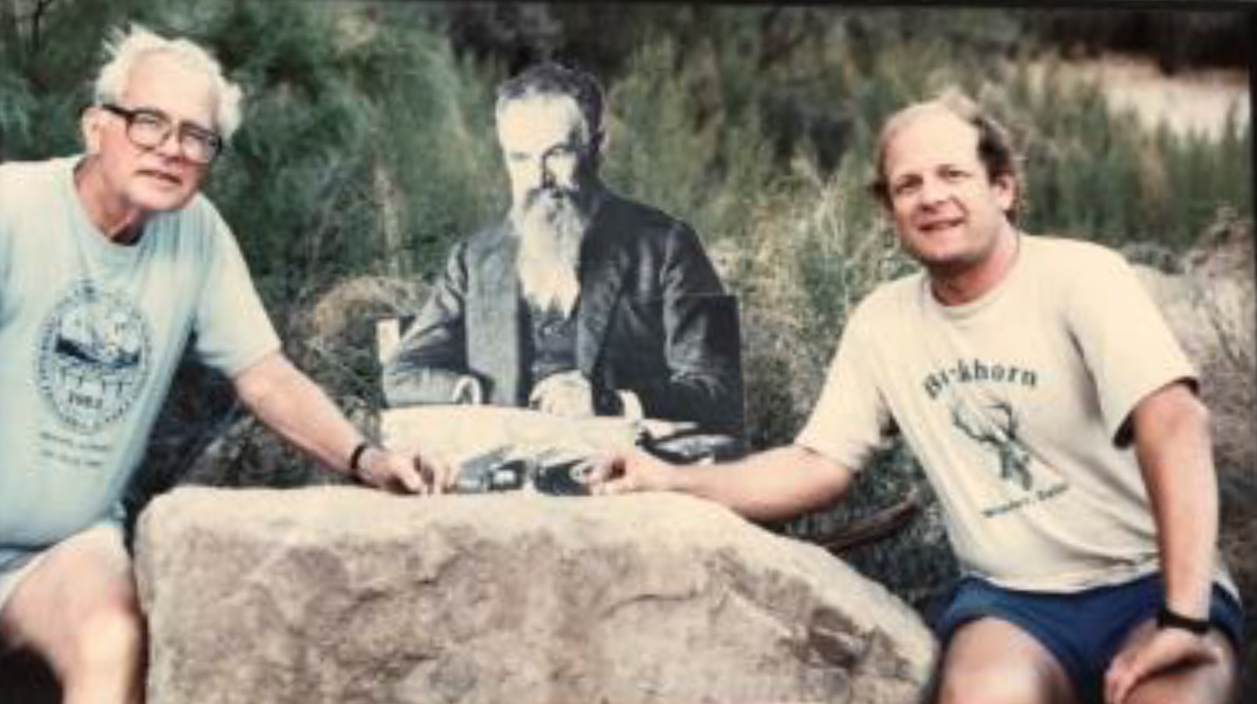“Earth is ancient now, but all knowledge is stored up in her,” the English author Jeanette Winterson wrote. “She keeps a record of everything that has happened since time began. … Through time, her secret codes have gradually been broken. Her mud and lava is a message from the past.”
Geoscientists speak her language. They can read the message.
They can peer into grains of sand and determine from them how rain carves mountains. How minerals interact with chemicals and pressure. How the Earth’s crust interacts with the ocean and the atmosphere. Their sense of time and scale dwarfs most other sciences. They range from days to millennia. Where you and I see immobile rock, they see a dance of force and movement.
To learn, they venture out to the far corners of the globe, spending months on ice caps or clawing at the desert floor, roasting in canyons, toting loads of instruments down ribbon-thin trails, lugging samples through airports.
“I never met a rock I didn’t like,” marine geologist Robert Dietz once said.
Go out in the field with even the most jaded geologist, to some place they’ve been a hundred times. They’ll pick something up and hold it out. “Oh, look at this!”
Arizona State University’s School of Earth and Space Exploration is entering its 15th year. The school is renowned as an interdisciplinary powerhouse, and geology is a big part of that — its geological and earth sciences were ranked No. 1 in the National Science Foundation's Higher Education Research and Development (HERD) survey in 2018, the most recent data available.
But it has “a heritage of geoscience and astrophysics activity and collaboration long before 2002Michael Crow became president in 2002, bringing his idea of the New American University — an agile and radical reimagining of higher education — to ASU.,” Professor Emeritus James Tyburczy said.
This story is about the development and history of a university’s geology program. It’s not exhaustive, nor is it a Homeric catalog of ships. The character of any university department is as whimsically and erratically created as the nature of a person. People come. People go. It is directed here. It is directed there. Such is this story.
And it begins in 1942 at a Route 66 roadside attraction in northern Arizona.
The millionaire miner of the Milky Way
Harvey Nininger was an elfin man with a slight overbite and a receding hairline. The son of itinerant farmers who didn’t believe in education, he attended school for about three months of the year in rural Oklahoma. The rest of the time he picked or planted cotton. His brother attended the state normal school and convinced Nininger to join him there. He was immediately hooked on learning. He studied biology, and his junior year his professor hired him as a replacement teacher.
“In 1923, in the fall, I saw this big fireball come across one evening as we were talking in front of my friend's house,” he said in a 1976 interview for the Flagstaff Public Library Oral History Project. “This just changed my whole picture.”
Harvey Nininger examining soil collected near the Meteor Crater rim during his 1946–1948 field investigation. He believed that nickel-rich metallic spheroids he found in the soil were condensation droplets from a cloud of vaporized metal from the impacting meteorite, and constituted tangible proof of Forest R. Moulton’s explosion theory of the crater’s formation. Photo courtesy of Carleton B. Moore/ASU Center for Meteorite Studies
Nininger became obsessed with meteorites. He learned everything he could, which wasn’t much. Meteorites were so rare scientists thought studying them was a waste of time.
He came up with a system for finding them. (He called it the first and only practical system for the task.) He paid a dollar a pound.
“Go out and educate the people, tell the people what they’re like, offer a bonus if they find any,” he said. “And in a country where the land is farmed, they will turn up these things. And that’s the way I made the collection.”
Nininger created the first classification system for meteorites and published numerous books and articles reporting results of his pioneering research. After 15 years of collecting, he decided in 1942 he could make a living out of a museum. He estimated he had half of all meteorites discovered in the world. The museum was on Route 66, in a sandstone building with a tower — now in ruins — opposite Meteor Crater.
The American Meteorite Museum, which Nininger established in the mid-1940s on Route 66, some 5 miles from Meteor Crater. It housed his meteorite collection and was maintained by a small admission charge to the public, as well as the sale of specimens, books and jewelry crafted from small meteorite fragments. The museum moved to Sedona, Arizona, in 1953, where it operated until 1960. Photo courtesy of Carleton B. Moore/ASU Center for Meteorite Studies
But when the interstate highway system was built, it bypassed the museum. Nininger moved it to Sedona in 1953. At that point he and his wife, Addie, were tired of barely scraping by. They knew they were sitting on several hundreds of thousands of dollars’ worth of specimens. The press dubbed him the “Millionaire Miner of the Milky Way,” but the millions weren’t there.
He sold about 20% of the collection to the British Museum for $140,000. The Niningers paid off their debts and went on a seven-month vacation to Asia.
When the Niningers returned from their vacation (much of which had been spent hunting for meteorites in places like the Philippines), they put out the word that the rest of the collection was for sale.
Enter ASU. Arizona State became a university in 1958. George Boyd was coordinator of research, but the problem was there wasn’t any research to coordinate. There was some scorpion research going on in biology, but that was about it. Boyd cast about for something substantial.
“And immediately, the thing began to get hot,” said Nininger, quoted in the Flagstaff Public Library Oral History Project.
Boyd persuaded the National Science Foundation to come out and look at the collection. Sputnik was the big news back then. Space was on everyone’s mind. And right here in Arizona was a big chunk of space.
The NSF sent out a rep who drove up to Sedona. He met the Niningers and looked over the collection.
Nininger recalled: “Then he said, ‘Now, you've spent your life gathering this collection. And we feel that you ought to have something to say as to where it goes. And we have to buy it, because there are half a dozen institutions as it is now, all of 'em want us to furnish the money, but we think we ought to get your opinion before we decide.’ And I said, ‘We have anticipated this sort of thing and have talked about it. And Addie and I have decided that if you will put it somewhere in Arizona, in one of the institutions in Arizona, we'll knock off 40% of the price, based on what we sold to the British Museum.' Well, that settled it then; it went to Arizona State University. And we have retired, but of course I never quit work on a thing like that.”
Paul Miller was the founding chair of the Department of Geology at ASU from 1957 to 1965. He hired people to teach who just happened to be around, like a northern Arizona uranium hunter. They were nontenured — sometimes high school teachers. Classes tended to be 30 to 40 people. Groups of undergrads studied field geology at Camp Tontozona.
“Paul Miller was a very nice guy, but he was not driven to do high-powered research,” said Carleton Moore, professor emeritus of chemistry and biochemistry.
Some of the faculty were nervous about the switch. They’d signed up to teach, not do research.
“(Miller) didn’t want the meteorites because meteorites are not geology,” Moore said.
So the meteorite collection was put into the chemistry department.
“They had no one in chemistry who knew anything about meteorites so they went shopping to find someone,” Moore said. “People in the national scene did not trust a school like ASU to handle it properly.”
What they needed was a chemist who knew something about meteorites.
Herbert Fales, the vice president of the International Nickel Company, was a meteorite enthusiast familiar with the Nininger collection. He offered to help sweeten the pot for the NSF. “Fales was always ready to support us money-wise,” Moore said.
Moore was a chemistry major from CalTech, who had chosen geology as a minor. “I was a chemist who knew something about meteorites,” he said. He was teaching in Connecticut when he got the call from Fales.
So, Moore came to ASU in 1961 as the founding director of the Center for Meteorite Studies. He acquired 35 research grants in materials science and geology from NASA, the National Science Foundation and the U.S. Geological Survey from 1963 to 1987. The center is the world’s largest university collection, with more than 40,000 individual specimens.
Carleton Moore, in a circa 1960 ASU Library photo, was appointed to serve as the first director of ASU’s Center for Meteorite Studies, which exists to this day. Moore acquired 35 research grants in materials science and geology from NASA, the National Science Foundation and the U.S. Geological Survey from 1963 to 1987. Moore’s research on moon dust and moon rocks acquired from NASA’s Apollo missions were particularly well-publicized. This work resulted in a large number of public speaking opportunities in Arizona and set the stage for significant work in planetary geology and astrophysics by subsequent ASU faculty.
Before the Apollo missions, ASU was a major source of meteorites for people who were going to analyze the moon rocks. It’s what they practiced on.
Moore’s research on moon dust and moon rocks acquired from the Apollo missions in the 1970s were particularly well-publicized. NASA flew him to Houston to do moon rock analysis on the weekends. (He flew commercial, changing planes in Dallas while hauling a huge bag of meteorites.)
Even so, the geology department was still in its infancy.
Moore’s description of the department at that time: “We stumbled along, with people coming and going.”
The Victorian scholar
In 1961, LeRoy Eyring was recruited as chair of the chemistry department. Then in 1965, Paul Miller, who was exhausted by research, was replaced by Troy Péwé as the geology department chair.
Troy Péwé in a circa 1960 ASU Library photo, studied permafrost and geology in the Arctic, Antarctica, Tibet, Norway, Alaska and Arizona. He was the head of the University of Alaska’s Geology Department and president of the Alaska Division of the American Association for the Advancement of Science before coming to ASU in 1965. As head of the Department of Geology, he founded ASU’s Museum of Geology and authored over 60 surficial and environmental geology maps for both central Alaska and the Phoenix area. His study of loess, fine windblown silts in periglacial regions, helped him understand the windblown sands of the Arizona desert. Péwé’s engineering and geology studies in the Valley warned area residents of the hazards of urban expansion where groundwater withdrawal causes shrinkage subsidence and ground fissures. He was one of the first professional Quaternary geologists to spend several months in Antarctica’s McMurdo Sound region, and in 1999 he was given the Distinguished Career Award of the Geological Society of America.
Péwé was an unusual man. He was something of a polymath who seemed to belong more to the Victorian era than modern times. He came from the University of Alaska: He studied icy landscapes and was a permafrost expert (he coined the word). He discovered mastodons and mammoths, tracked the distribution of fine dust from Asia to Alaska — eventually tracing some to its source — and was one of the first to show that global climate change existed and to document it. He learned to write in Russian and Chinese to communicate with researchers because the language barrier frustrated him.
At ASU he created the doctoral program in geology, set up the curriculum, engaged the community, changed the culture of the department and raised its national research profile. He got geology its own space in the Bateman Physical Sciences Center when the department had no space at all. He also brought a Foucault pendulum to the building.
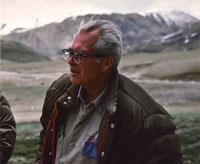
Troy Péwé, chair of the ASU Department of Geology, 1965-1976.
No one expected an icy-landscapes guy to embrace the desert, but Péwé did.
“When Péwé got here, he immediately started doing a lot of environmental geology maps and went around to the various cities and said, ‘You know, you ought to have these maps for your city planning and stuff,’ and really established a research program in the Valley, which was very good for his students,” Professor Emeritus Ed Stump said. “It didn't bring in a lot of money, and it was the kind of research that was eschewed by the chemists who thought it was a lower level of research than the kind of stuff they were doing with the laboratories and the computers and things.”
In 1962, a PhD candidate named Everett Gibson (now at NASA) had decided the university needed to do a geology rafting trip down the Colorado River in the Grand Canyon. He contacted outfitter Hatch River Expeditions and set the idea in motion. Faculty and students did three-day trips from Lees Ferry to Phantom Ranch, then hiked out.
After his first jaunt, Péwé became absolutely hooked. He was obsessed with John Wesley Powell, the geologist and one-armed Civil War veteran who led the first river trip through Grand Canyon. He brought a cardboard cutout of Powell on trips and gave lectures at night in Powell’s voice.
Troy Péwé (left) and James Tyburczy (right) in the Grand Canyon with a cardboard cutout of John Wesley Powell, date unknown.
In addition to all his other interests, Péwé was a ham radio operator. Later in life, when he was too old to risk a river trip, faculty brought along a radio receiver and hid it behind a boulder in camp. After dinner, they switched it on and Péwé called in from his home in Scottsdale: “This is the ghost of John Wesley Powell …”
Under Péwé, the department grew.
“And it became more balanced,” Moore said. “He hired the usual people you find in a geology department — economic geologists, geophysicists. What really made the big kick was when they brought (John) Cowley into physics with modern instrumentation.”
Cowley pioneered contributions in the fields of electron microscopy, diffraction and crystallography. The John M. Cowley Center for High-Resolution Electron Microscopy is named in his honor.
The geochemists
In the 1970s, geology research was coalescing around two poles: high-pressure work and high-resolution microscopy.
“(Volcanologist) Mike Sheridan did the mapping of the Superstition Mountains and showing how they evolved. … It’s very impressive,” Moore said. “We began to evolve into what you would call a classic geology department.”
Alexandra Navrotsky is a physical chemist who also works in mineralogy, geochemistry and nanogeoscience. She was hired by Eyring in 1969. She, John Holloway and Peter Buseck were, or later became, joint appointments in geology and chemistry.
Chemistry department chair Eyring had a National Science Foundation Area Development Grant funding three positions in chemistry and three in physics for three years, then the university took them over. He called colleagues around the country asking for applicants. Navrotsky was invited out for an interview. She liked what was going on in solid-state chemistry. They made her a good offer, and she had fallen in love with Arizona. “And I said, well, good. I don't have to job hunt.”
Navrotsky described her work: “Over the past 50 years, my contribution has been maybe 50% things related to geo and environmental science and 50% in things related to solid-state chemistry and material science. … It's gone back and forth and been a little bit more of this or a little bit more of that, but it's basically the same questions.”
She and Holloway, an experimental petrologist, hit it off immediately. Their labs were next to each other in the basement of Bateman.
“We really helped each other in those first, maybe two, three years,” she said. “I knew more chemistry, and he was the better hands-on mechanical person.”
Navrotsky and Holloway would meet at The Warehouse (a long-gone restaurant and bar on University Drive) with their grad students and have long beery lunches with great discussions.
Geosciences, like the university, were changing and becoming less isolated in their own silos.
“Basically at that point, there were people being hired in geology that were really geochemistry, mineralogy, mineral physics, whatever you want to call it,” Navrotsky said.
Even though Navrotsky is a pure chemist, she is cited by many today as being one of the founders of what is now the School of Earth and Space Exploration.
“I got an appreciation for what we eventually got to be called, perhaps mineral physics — the fundamental, quantitative, physical, chemical approach to mineralogical problems,” she said.
In the 1970s, the F wing of Bateman was being built. But there was a state budget crisis: The university could only afford to put in half the elevators. Geology and physics got the top floors. Chemistry was in the basement. “Physics got the elevators and we got the shaft,” Navrotsky joked.
Upon returning to ASU in 2019, Navrotsky now has a split appointment between the School of Molecular Sciences and the School for Engineering of Matter, Transport and Energy, where she heads the new Navrotsky Eyring Center for Materials of the Universe, a cross-disciplinary initiative interrelating planetary science and materials science. She also has an affiliate faculty appointment in the School of Earth and Space Exploration.
Part 2: A change at the top as space comes into play
Top photo courtesy of Pixabay.com.
More Science and technology
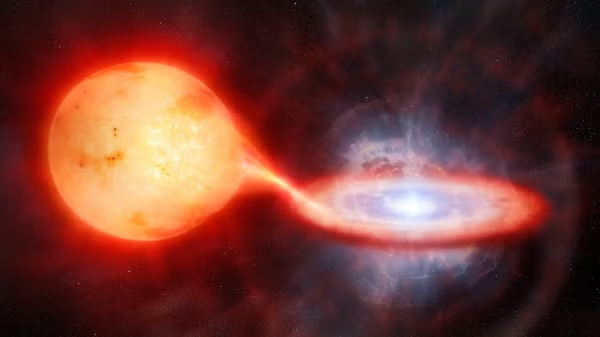
Astronomers observe ultra-hot nova with unexpected chemistry
A team of astronomers, including Arizona State University Regents Professor Sumner Starrfield, has uncovered an exceptionally hot and violent eruption through the first-ever near-infrared analysis of…
Statewide initiative to speed transfer of ASU lab research to marketplace
A new initiative will help speed the time it takes for groundbreaking biomedical research at Arizona’s three public universities to be transformed into devices, drugs and therapies that help people.…
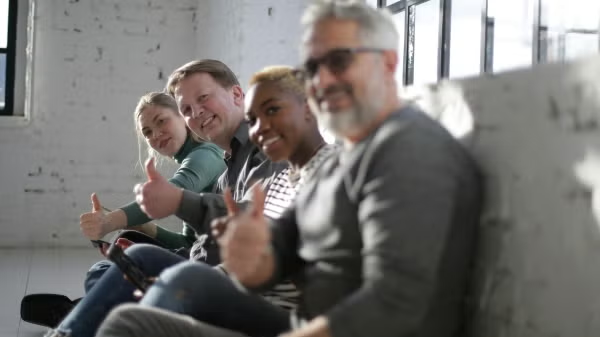
ASU research seeks solutions to challenges faced by middle-aged adults
Adults in midlife comprise a large percentage of the country’s population — 24 percent of Arizonans are between 45 and 65 years old — and they also make up the majority of the American workforce…


